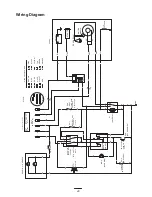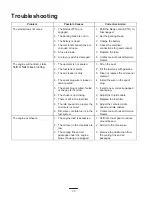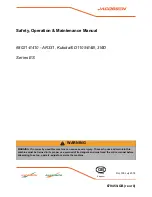
26
5. Install the battery in the tractor and connect the battery
cables; refer to Installing the Battery on page 24.
Important
Do not run the tractor with the battery
disconnected. Electrical damage may occur.
Draining the Fuel Tank
Danger
In certain conditions, gasoline is extremely
flammable and highly explosive. A fire or
explosion from gasoline can burn you and others
and can damage property.
•
Drain gasoline from the fuel tank when the
engine is cold. Do this outdoors in an open area.
Wipe up any gasoline that spills.
•
Never smoke when draining gasoline, and stay
away from an open flame or where a spark may
ignite the gasoline fumes.
1. Park the tractor so that the left front side is slightly
lower than the right side to ensure that the fuel tank
drains completely.
2. Disengage the blades (PTO).
3. Set the parking brake.
4. Stop the engine and wait for all moving parts to stop.
5. Remove the ignition key.
6. Open the hood.
7. Squeeze the ends of the hose clamp together and slide it
up the fuel line toward the fuel tank (Fig. 26).
1
3
2
Figure 26
1.
Hose clamp
2.
Fuel line
3.
Filter
8. Pull the fuel line off of the filter (Fig. 26) and allow the
gasoline to drain into a gas can or drain pan.
Note: Now is the best time to install a new fuel filter
because the fuel tank is empty.
9. Install the fuel line onto the filter. Slide the hose clamp
close to the filter to secure the fuel line and filter.
Replacing the Fuel Filter
Replace the fuel filter after every 100 operating hours or
yearly, whichever occurs first.
The best time to replace the fuel filter (Fig. 26) is when the
fuel tank is empty. Never install a dirty filter if it is
removed from the fuel line.
1. Disengage the blades (PTO).
2. Set the parking brake.
3. Stop the engine and wait for all moving parts to stop.
4. Remove the ignition key.
5. Open the hood.
6. Squeeze the ends of the hose clamps together and slide
them away from the filter (Fig. 26).
7. Remove the filter from the fuel lines.
8. Install a new filter and move the hose clamps close to
the filter.
9. Close the hood.
Servicing the Transaxle Fluid
Check the fluid level after every 100 hours or yearly,
whichever occurs first. Always keep the fluid level at the
full level when the transaxle is cold.
Note: The transaxle is factory sealed and does not require
oil changes.
Fluid Type: SAE 20W-50 engine oil (API service SH/CD
recommended)
Checking the Fluid Level
1. Park the tractor on a level surface.
2. Disengage the blades (PTO).
3. Set the parking brake.
4. Stop the engine and wait for all moving parts to stop.
5. Remove the ignition key.
6. Clean around the fill plug (Fig. 27) so that dirt cannot
fall into the reservoir if fluid needs to be added.







































